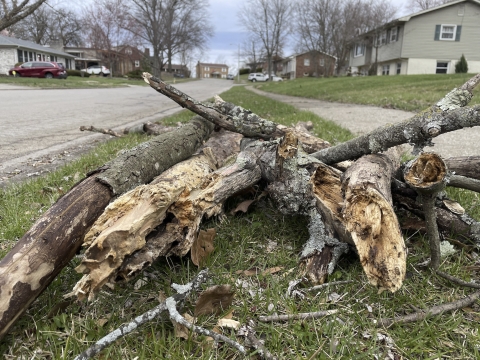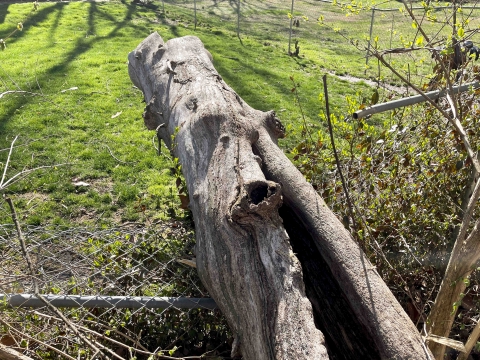Emergency Management
Emergency Management's mission is to enhance the public safety of Lexington-Fayette County residents and businesses through emergency preparedness, mitigation, response and recovery.
To find information on any emergency situation, visit Emergency Management's official website at BeReadyLexington.com
What We Do
The Lexington Division of Emergency Management (DEM) operates within the emergency management cycle, which has four phases: preparation, response, recovery, and mitigation. You can learn about the phases below.
These phases occur before, during, and after emergencies. The unpredictable timing of emergencies means response and recovery duties arise with little or no notice. Mitigation and preparedness activities occur year-round, except when response and recovery take priority.
Emergency Management Cycle
Preparation
Preparation is how DEM helps the community and partner agencies get ready for an emergency.
Emergency Management coordinates training for volunteers and full-time staff to ensure everyone who responds to an incident knows what to do and how to respond. Through federal homeland security grants, state emergency management funds, and the urban county budget, DEM obtains equipment and arranges training so professional responders have the tools to do their jobs. These tools allow partnerships with organizations across and beyond Fayette County to plan responses to a wide range of threats, from natural disasters to failures of technology. The Lexington-Fayette County Emergency Operations Plan (EOP) is a high-level planning document that defines the threats facing Lexington and sets out the roles and responsibilities for responding to each.
Part of preparedness is understanding the threats to the community. With partners in the police and fire departments, DEM is Lexington’s threat analyst. This means studying previous events that have affected Lexington and other communities to understand their effects. This understanding helps better plan responses. The lessons learned here also flow into recovery and mitigation duties.
Through community outreach efforts and public information campaigns, DEM teaches residents how to help themselves and their neighbors during emergencies. This individual and household readiness helps improve the whole community’s preparedness. In conjunction with the fire department, DEM runs Lexington’s Community Emergency Response Team (CERT) program. Further outreach includes other government agencies, private-sector partners, and non-profit organizations that provide preparedness education, training, and volunteer opportunities. Through the 1620 AM radio station and social media presence, DEM provides the community with additional preparedness information.
Response
Response actions are what is done immediately before, during, and immediately after an event to protect life, property and the environment.
During a response to a major incident, the emergency operations center (EOC) is the focal point for coordination within and beyond the county. Other county agencies represented in the EOC include fire, police, community corrections, public health, public works, geographic information systems, and social services, along with the Red Cross and private utility companies. The EOC’s communications capability and staff also make it Fayette County’s point of contact with state and federal officials and any counterparts in neighboring counties.
In the emergency management profession, DEM considers response a proactive function. In other words, if an event is predicted, response efforts can begin before it happens. Whenever there is advance warning of a potential threat, such as severe weather, DEM starts “leaning forward,” monitoring the developing situation. Residents and government officials are alerted hours or days ahead of severe weather so everyone has time to prepare. If there is a need for large-scale coordination across multiple agencies, the EOC may open. If necessary, the county’s alert and notification systems are activated to ensure every affected resident receives timely warnings.
Recovery
Recovery is the process of returning the community to normal after a disaster.
Depending on the event’s effects and scale, recovery can be relatively rapid or involve years of reconstruction. Particularly severe disasters can permanently change a community’s demographics or economy, requiring residents and leaders to find a new definition of “normal.”
DEM’s recovery role involves coordinating the efforts of many other organizations. Recovery isn’t limited to clearing debris and replacing damaged or destroyed property. It can also involve caring for the community’s survivors and responders. Economic recovery—bringing back business and employment opportunities and developing new ones—is critical, too. To prepare for recovery efforts, DEM studies the recoveries of other communities that have experienced catastrophic events and determines how those lessons could help Lexington recover if similar disasters occur here.
Mitigation
Mitigation activities reduce the impact a disaster can have on a community.
Some mitigation actions are physical, such as adding storm shelters to homes in tornado-prone areas or improving storm sewers to reduce the flooding associated with heavy rain. Others can be legal, such as codes or legislation forbidding property development in areas with frequent flooding, wildfires, or sinkholes. Many community and individual preparedness activities can also be seen as mitigation activities, as residents become more capable of handling emergencies through their skills and supplies.
News
Lexington Emergency Management wants to hear from residents who have exhausted their ability to clear storm debris from private property.
The Dunbar Community Center and the Tates Creek Ballroom will be open from 7 – 11 a.m.
Complete the form if you experienced property damage from the March 3 wind storm.




